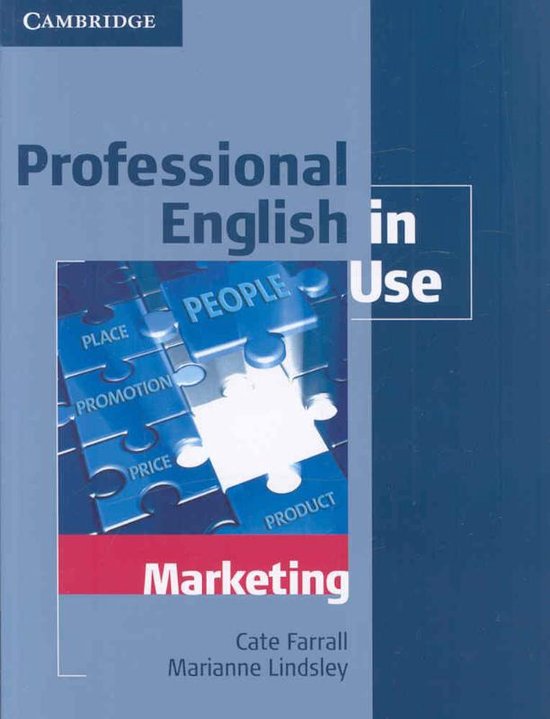Professional English in Use
Unit 4: Marketing strategy and the marketing
plan
A: Marketing strategy vs. marketing plan
Marketing strategy = describes how a company will position itself and the products it sells or
the services it provides in the competitive marketplace.
Marketing plan = the written document which details the marketing methods selected and
specific marketing actions or marketing activities. It also examines the resources needed to
achieve specified marketing objectives.
B: Developing the marketing plan
Develop a marketing plan using the stages known as AOSTC (Analysis, Objectives, Strategies,
Tactics and Control)
Current marketing Information on the competitors and the
situation marketplace
Competitor analysis The competition in the marketplace
Analysis Product/service analysis What you sell or provide and your Unique
Selling Point (USP) this distinguishes your
product/service from others
Target market Your customer groups or segments
Marketing goals What you want to achieve
Objectives SMART objectives Specific, Measurable, Achievable, Realistic
and Timed
The approach to meeting Which market segment? How will we target
Strategies
the objectives them?
Converting strategy into 4 P’s
marketing mix - Product
Tactics - Price
- Place
- Promotion
Tracking How the success of the marketing plan will
Control
be measured
Market segments group of customers with similar needs or purchasing desires
Target market the consumers, clients or customers you want to attract
Marketing strategy a definition of the company, the product and the competition
Marketing plan detailed information about how to fulfil the marketing strategy
Marketing methods the techniques you can use to communicate with your consumers
Marketing mix the combination of different elements used to market a product or service
,Unit 12: Brainstorming
A: The brainstorm session
Brainstorming = a technique used by marketers during product naming to find new names
for products, or during product development to find new products and generate ideas
3 roles
- Leader
- Scribe
- Team members
Define a problem statement: focus on the aim of the session.
Setting ground rules for brainstorming:
- All ideas are welcome. No judgements or criticisms should be made of ideas.
- Change involves risk-taking. The quantity of ideas is more important than the quality.
- There is no ownership of ideas. Participants should ‘hitchhike’ on, or build on other
people’s ideas.
The scribe needs to note down every idea.
B: Brainstorming techniques
Get the creative juices flowing = get people thinking more creatively
Think out of the box = look at the problem from a new or different angle
Use a random word as a starting point, use random word generators
Combinatory play = random words are listed and then put together, you play with the
combinations until you find a promising new combination
Ask novel questions that will stimulate creative answers
, Unit 13: Product and service types
A: Product types
Raw materials are used to make or manufacture other products
A product line = a group of related products made and marketed by a manufacturer
There is usually a logical grouping of products
Example: a cosmetic company that's already selling a high-priced product line of makeup
under one of its well-known brands might launch a product line under the same brand name
but at a lower price point
A product type = a group of products offered by different companies which are technically
similar, but there will be variations in terms of price, appearance…
Example: make-up from Chanel and Dior
A product class = a group of products that may be considered as substitutes for one another
Example: Zara and H&M are in the same class. Christian Dior is the same product type,
but not in the same class
B: Word combinations with ‘goods’ and ‘products’
GOODS
Convenience fast moving consumer goods (FMCG) / consumer packaged goods (CPG)
= products with a high turnover and relatively low price, such as table salt or shampoo
White goods
= major household electrical goods which are usually white, such as freezers, washing
machines and dishwashers
Brown goods
= major household electrical goods that are not usually white, such as camcorders,
televisions and DVD players
Perishable products (perishables)
= goods that have a limited shelf life and must be consumed relatively quickly, such as fresh
fruit, fresh meat and eggs
Durable (durables) / hard goods
= goods that last for a long time – they cannot be easily worn out or used up, such as cars,
furniture and white goods
Nondurable/soft goods
= goods that are used up or last for less than three years, for example perishable goods,
consumable supplies such as CD ROM’s, or ink for a printer





